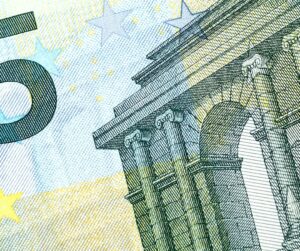Forex Spread Definition: Types of Spreads and Their Impact on Trading
When it comes to forex trading, understanding the concept of spreads is crucial. A spread is the difference between the bid price (the price at which a buyer is willing to purchase a currency pair) and the ask price (the price at which a seller is willing to sell a currency pair). This difference is measured in pips and is one of the main costs associated with trading forex. In this article, we will explore the various types of spreads and their impact on trading.
1. Fixed Spreads:
Fixed spreads, also known as constant spreads, remain the same regardless of market conditions. This type of spread is set by the broker and does not change even during periods of high market volatility. Fixed spreads are commonly used by market makers who act as intermediaries between buyers and sellers. While fixed spreads provide traders with predictability, they are generally wider than variable spreads, which can result in higher trading costs.
2. Variable Spreads:
Variable spreads, also known as floating spreads, fluctuate depending on market conditions. The spread widens or narrows based on factors such as liquidity, market demand, and volatility. During times of high market liquidity and stability, variable spreads tend to be narrower. However, during periods of low liquidity or high volatility, such as major news releases or economic events, variable spreads can widen significantly. These wider spreads can increase trading costs and potentially impact trading strategies.
3. Commission-Based Spreads:
Some brokers offer commission-based spreads in addition to the bid-ask spread. In this case, traders are charged a fixed commission fee per trade instead of a wider spread. Commission-based spreads are often preferred by professional traders who execute large volume trades. This type of spread can be cost-effective for traders with high trading frequencies or for those who require tight spreads for their strategies.
4. Raw Spreads:
Raw spreads, also known as raw pricing, are spreads that do not include any markup or additional fees from the broker. Raw spreads are offered by brokers who operate using the straight-through processing (STP) or the electronic communication network (ECN) model. These brokers pass on the prices obtained from liquidity providers directly to traders without any interference. Raw spreads are generally very tight and can be beneficial for scalping or high-frequency trading strategies.
The impact of spreads on trading cannot be underestimated. The wider the spread, the more it affects the profitability of a trade. For example, if a trader buys a currency pair at the ask price and then immediately sells it at the bid price, the spread is the cost of the trade. Therefore, it is important for traders to choose brokers with competitive spreads to minimize trading costs.
Wide spreads can also impact trading strategies. For instance, scalpers who aim to profit from small price movements may find it challenging to make a profit if the spreads are too wide. Similarly, day traders who rely on short-term price movements may need to factor in the spread when determining their profit targets and stop loss levels.
It is worth noting that spreads can vary across different currency pairs. Major currency pairs, such as EUR/USD and GBP/USD, usually have tighter spreads due to their high liquidity. On the other hand, exotic currency pairs, which involve currencies from emerging markets, tend to have wider spreads due to lower liquidity and higher volatility.
In conclusion, understanding the different types of spreads and their impact on trading is vital for forex traders. Whether it’s fixed spreads, variable spreads, commission-based spreads, or raw spreads, each type has its pros and cons. Traders should carefully consider their trading style, strategy, and cost requirements when choosing a broker. By selecting a broker with competitive spreads, traders can optimize their trading performance and improve their chances of success in the forex market.





